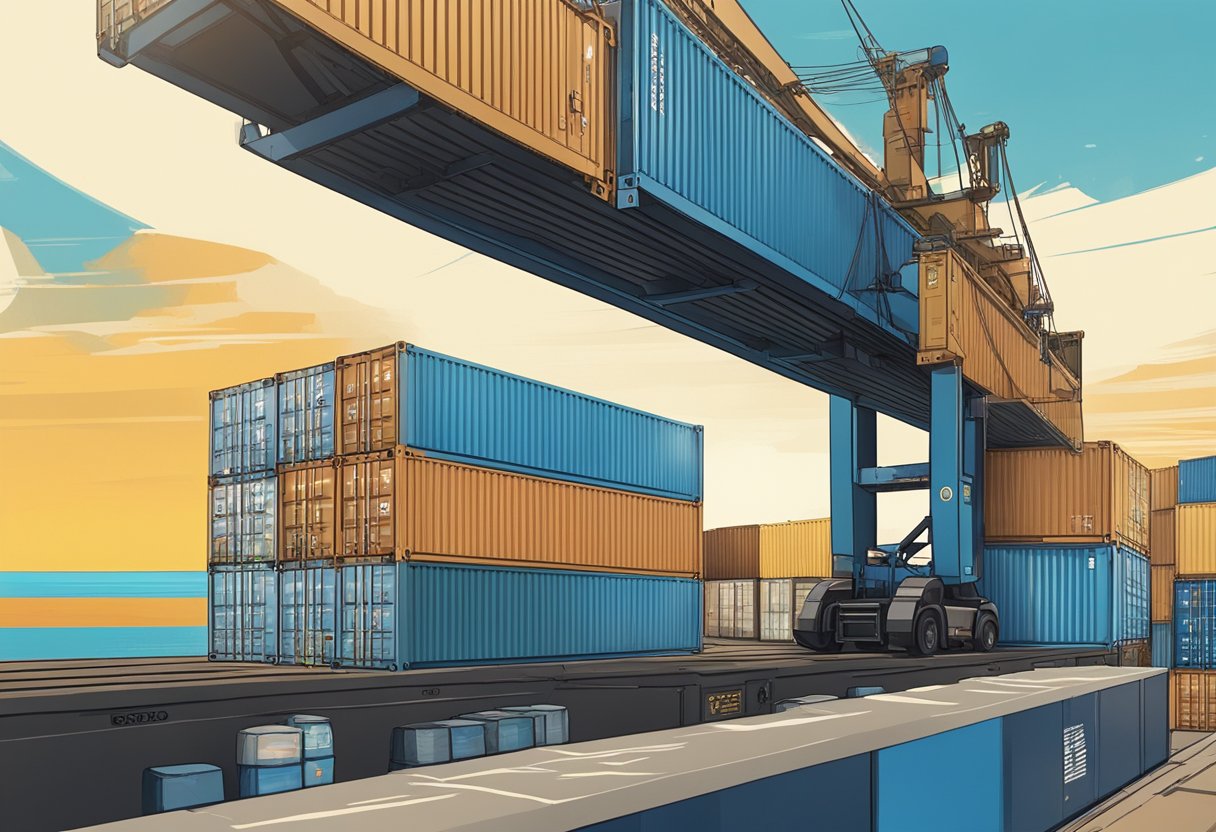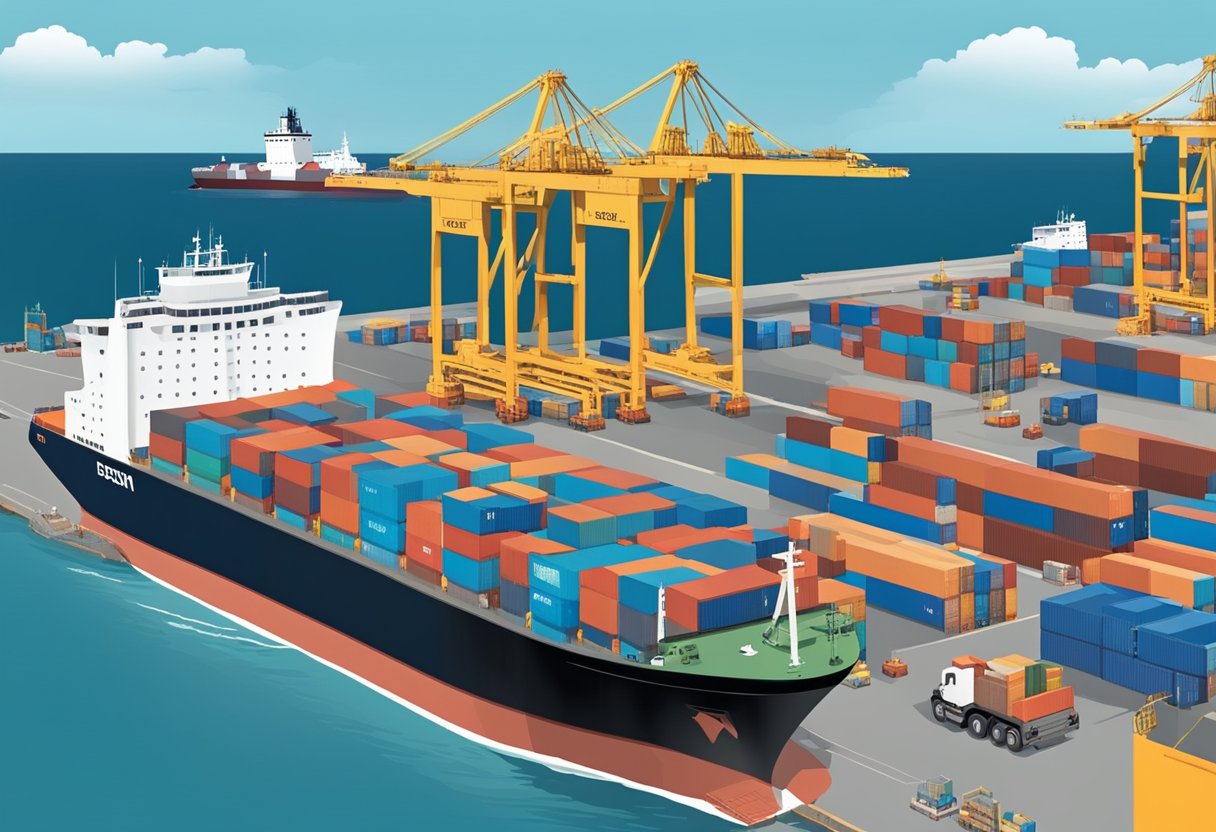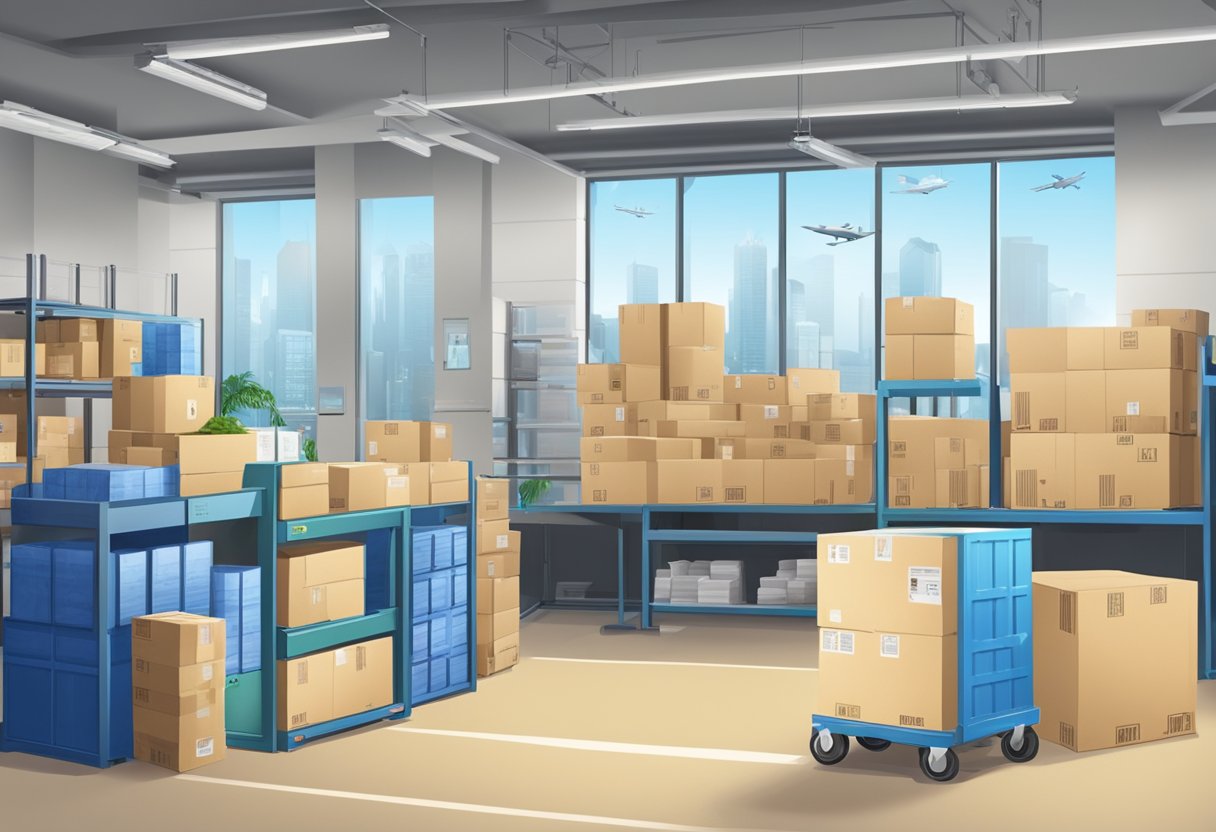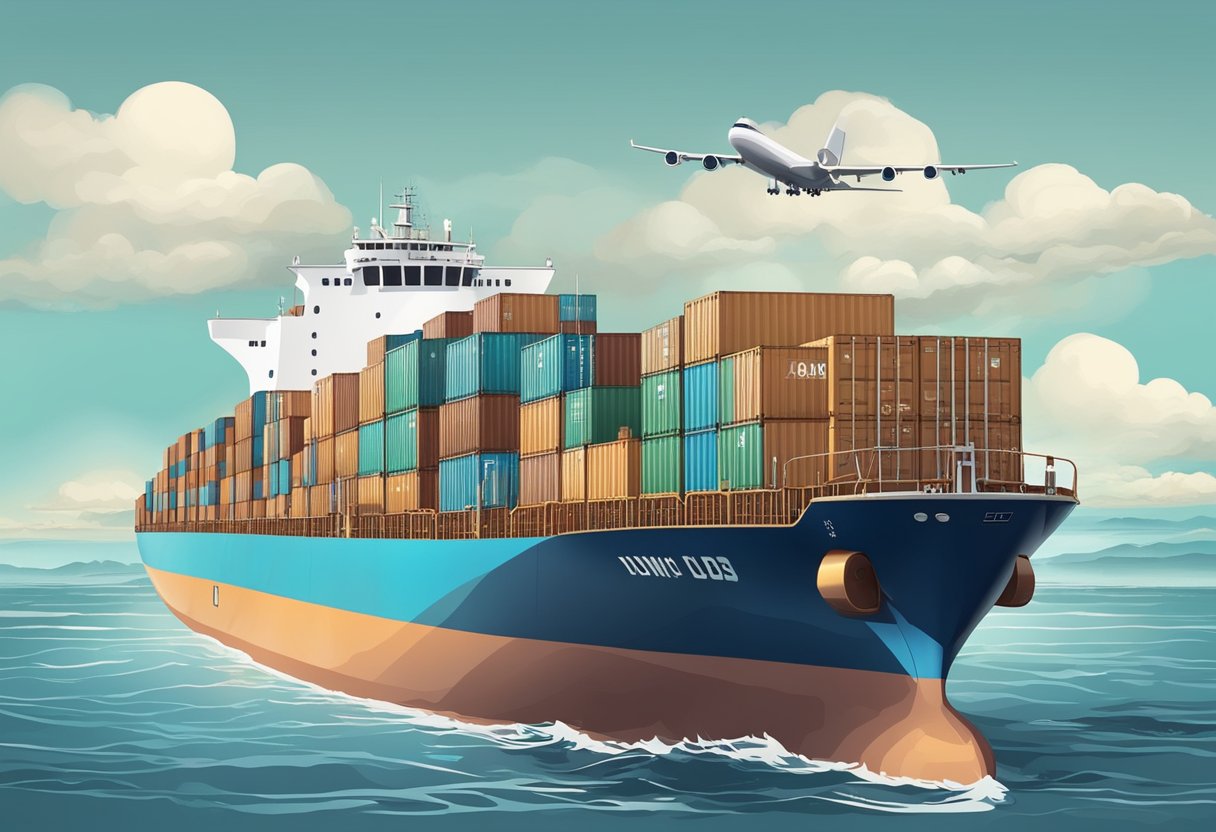Importing goods from China to the USA has become increasingly popular over the years due to the country’s low production costs and large manufacturing capabilities. However, navigating the process of importing from China can be complex and overwhelming for those who are new to the process. This article aims to provide a comprehensive guide on importing from China to the USA, covering everything from sourcing goods to arranging shipping and finalizing delivery.

One of the most important aspects of importing from China is dealing with tariffs and restrictions. The USA has implemented various tariffs on goods imported from China, which can significantly impact the overall cost of importing. Additionally, there may be restrictions on certain types of goods, such as those related to health and safety, that must be considered when importing. This guide will provide information on how to navigate these tariffs and restrictions to ensure a successful import process.
Another crucial aspect of importing from China is sourcing goods. Finding the right supplier is essential to ensuring that you receive high-quality products at a reasonable price. This guide will provide information on how to research and vet potential suppliers, as well as tips for negotiating prices and establishing a good working relationship with your chosen supplier. Additionally, this guide will cover the importance of ensuring that products meet U.S. guidelines and regulations, as well as how to arrange shipping and finalize delivery.
Preparation for Importing

Before importing goods from China to the USA, it is important to prepare thoroughly to ensure a smooth import process. This section will cover several key areas that importers should consider before importing from China.
Sampling and Quality Control
It is crucial to obtain samples of the products that you intend to import and test them thoroughly to ensure that they meet your quality standards. This can be done by requesting samples from your supplier or by working with a third-party quality control company. It is also important to establish a quality control process with your supplier to ensure that the products consistently meet your standards.
Understanding Regulations
Importers need to be aware of the various regulations that govern the import of goods into the USA. These regulations are enforced by government agencies such as the Environmental Protection Agency (EPA), Consumer Product Safety Commission (CPSC), Federal Trade Commission (FTC), and the U.S. Department of Agriculture (USDA). Importers should also be aware of any regulations specific to their industry and product.
Understanding Incoterms
Incoterms are a set of standardized trade terms that define the responsibilities of buyers and sellers in international trade. It is important to understand these terms to avoid any confusion or disputes with your supplier. Some common Incoterms used in importing from China include FOB (Free on Board), CIF (Cost, Insurance, and Freight), and EXW (Ex Works).
Packaging and Labeling
Importers should also consider packaging and labeling requirements before importing from China. Products must be packaged appropriately to ensure that they are not damaged during transit. Additionally, labels must meet specific requirements for the product and industry. For example, food products require specific labeling requirements that are enforced by the USDA.
Overall, proper preparation is essential for a successful import process from China to the USA. By understanding regulations, Incoterms, and quality control processes, importers can avoid potential issues and ensure that their products meet their standards.
Working with an Agent
https://www.youtube.com/watch?v=EQ7B9II3Kp0&embed=true
When importing goods from China to the USA, it can be helpful to work with an agent who has experience and knowledge of the process. An agent can assist with various aspects of the import process, including sourcing products, arranging shipping, and handling customs clearance. Here are some key considerations when working with an agent:
Choosing a Freight Forwarder
A freight forwarder is responsible for arranging the transportation of goods from the manufacturer in China to the final destination in the USA. They can help with shipping costs, freight costs, and customs clearance. When choosing a freight forwarder, it is important to consider their experience, reputation, and pricing. It is also important to ensure that the freight forwarder is licensed and insured.
Working with a Licensed Customs Broker
A licensed customs broker is responsible for handling the customs clearance process. They can help with customs bonds, customs bonds, and ensuring that the goods meet all necessary regulations and requirements. When choosing a customs broker, it is important to consider their experience, reputation, and pricing. It is also important to ensure that the customs broker is licensed and insured.
Engaging a Sourcing Agent
A sourcing agent can help with finding and vetting suppliers in China. They can also assist with negotiating prices, arranging samples, and ensuring that the products meet quality standards. When choosing a sourcing agent, it is important to consider their experience, reputation, and pricing. It is also important to ensure that the sourcing agent is independent and not affiliated with any specific supplier.
Overall, working with an agent can help to simplify the import process and ensure that everything is handled properly. However, it is important to choose the right agent and ensure that they are licensed, insured, and reputable.
Understanding the Financial Aspects
https://www.youtube.com/watch?v=geoe-6NBy10&embed=true
Importing from China to the USA involves several financial aspects that need to be considered to ensure a successful transaction. Here are some of the most important financial aspects to consider:
Estimating Costs
Before importing goods from China, it is important to estimate the costs involved in the process. This includes the cost of the product, the cost of shipping, and any additional fees such as import taxes and duties. One way to estimate costs is to use a landed cost calculator, which takes into account all the expenses associated with importing goods from China.
Managing Payments
Managing payments is another crucial aspect of importing from China. It is important to choose a secure and reliable payment method that protects both the buyer and the seller. One popular payment method is PayPal, which offers buyer protection and allows for easy transactions. It is also important to ensure that the payment terms are clearly defined in the invoice.
Calculating Profit Margins
Calculating profit margins is essential to ensure that the import business is profitable. This involves taking into account all the costs associated with importing, such as the cost of the product, shipping, import taxes, and duties, and comparing it to the selling price. It is important to set a realistic profit margin that takes into account all the expenses and ensures a profitable business.
Overall, understanding the financial aspects of importing from China to the USA is crucial to ensure a successful transaction. By estimating costs, managing payments, and calculating profit margins, importers can make informed decisions and ensure a profitable business.
Dealing with Customs
https://www.youtube.com/watch?v=xXe0y-DS5n8&embed=true
When importing products from China to the US, it is important to understand the customs process. This includes understanding tariff classifications, filing a customs declaration, and obtaining import permits and licenses.
Understanding Tariff Classifications
Tariff classification is the process of assigning a specific code to each imported product based on the Harmonized Tariff System (HTS) code. The HTS code is a standardized system used to classify goods for trade purposes. It is important to correctly classify your products to ensure that you are paying the correct amount of duty.
To determine the correct HTS code for your products, you can use the U.S. Customs and Border Protection (CBP) online search tool. You can also consult with a customs broker or trade consultant for assistance.
Filing a Customs Declaration
When importing products from China to the US, you must file a customs declaration with the CBP. The customs declaration includes information such as the value of the goods, the country of origin, and the HTS code.
To file a customs declaration, you will need to provide the following documents:
- Bill of lading: This is a document that provides details about the shipment, including the type of goods, the quantity, and the destination.
- Certificate of origin: This document verifies the country of origin of the goods.
- Import license or permit: Depending on the type of goods you are importing, you may need to obtain an import license or permit.
It is important to accurately complete and submit the customs declaration to avoid delays or penalties.
Obtaining Import Permits and Licenses
Certain products require an import license or permit before they can be imported into the US. Examples of products that may require an import license or permit include firearms, food products, and textiles.
To obtain an import license or permit, you will need to submit an application to the relevant government agency. The application process can be complex and time-consuming, so it is recommended to start the process early.
In summary, when importing products from China to the US, it is important to understand the customs process, including tariff classification, filing a customs declaration, and obtaining import permits and licenses. By following these guidelines and working with a customs broker or trade consultant, you can ensure a smooth and hassle-free import process.
Specific Considerations for Different Products

When importing from China to the USA, it is important to consider the specific regulations and requirements for different types of products. Here are some specific considerations for different product categories:
Importing Textiles
When importing textiles, it is important to consider the fiber content of the fabric. The US government requires that all textile products sold in the US must have a label that lists the fiber content. The label must also include the manufacturer’s identification number, country of origin, and care instructions.
In addition, textiles must meet certain flammability standards. The US Consumer Product Safety Commission (CPSC) regulates the flammability of clothing, textiles, and other products. Textile products that fail to meet these standards may be subject to recalls or fines.
Importing Electronics
When importing electronics, it is important to ensure that the products meet the Federal Communications Commission (FCC) regulations. The FCC regulates the electromagnetic compatibility (EMC) of electronic devices to ensure that they do not interfere with other electronic devices.
In addition, electronic products must meet certain safety standards. The Underwriters Laboratories (UL) is an independent organization that tests and certifies electronic products for safety. Products that do not meet these standards may be subject to recalls or fines.
Importing Food
When importing food products, it is important to consider the regulations of the Food and Drug Administration (FDA). The FDA regulates the safety and labeling of food products sold in the US.
Imported food products must meet the same standards as domestically produced products. The FDA may inspect imported food products to ensure that they meet these standards.
Importing Chemicals and Toxic Substances
When importing chemicals and toxic substances, it is important to consider the regulations of the Environmental Protection Agency (EPA). The EPA regulates the use and disposal of chemicals and toxic substances in the US.
Imported chemicals and toxic substances must meet the same standards as domestically produced products. The EPA may inspect imported products to ensure that they meet these standards.
It is also important to consider the regulations of California Proposition 65, which requires businesses to provide warnings about significant exposures to chemicals that cause cancer, birth defects, or other reproductive harm.
In conclusion, when importing from China to the USA, it is important to consider the specific regulations and requirements for different types of products. By doing so, businesses can avoid fines, recalls, and other legal issues.
Shipping and Storage

When importing from China to the USA, choosing the right shipping option is crucial to ensure timely delivery and cost-effectiveness. The buyer should carefully consider the size and weight of the order, as well as the urgency of the delivery, to determine the best shipping option.
Choosing Shipping Options
For small orders, DHL is a popular choice due to its fast delivery times and competitive pricing. However, for larger orders, sea freight may be a more cost-effective option. The import process can be complicated, so it is recommended to work with a reputable freight forwarder who can handle the logistics and paperwork.
When selecting a shipping option, it is important to consider the Incoterms, which determine the responsibilities and costs associated with the shipment. For example, if the buyer chooses FOB (Free on Board), they are responsible for the goods once they are loaded onto the ship, while if they choose CIF (Cost, Insurance, and Freight), the seller is responsible for the goods until they are delivered to the port of destination.
Managing Storage
Once the goods arrive in the USA, they need to be stored until they are ready for distribution. The buyer can choose to store the goods in a warehouse or with a third-party logistics provider. It is important to consider the storage costs and the accessibility of the storage location.
To manage storage effectively, the buyer should keep track of inventory levels and ensure that the goods are stored in a safe and secure environment. They should also consider the lead time for delivery from the storage location to the final destination, and plan accordingly.
Overall, choosing the right shipping option and managing storage effectively are critical components of the importing process. By working with a reputable freight forwarder and carefully considering the logistics, the buyer can ensure a smooth and cost-effective import experience.
Conclusion

Importing from China to the USA can be a complex process, but it can also be a lucrative opportunity for small businesses looking to expand their product offerings. However, it is important to do thorough research and understand the import process, including import taxes and regulations.
This guide has provided an overview of the importing process, including finding the right suppliers, negotiating prices, and navigating customs. It is important to work with reputable suppliers and ensure that all products meet safety and quality standards. Small businesses should also be aware of the potential costs and fees associated with importing, including tariffs, duties, and shipping fees.
Overall, importing from China to the USA can be a challenging but rewarding process for small businesses. By following the guidelines outlined in this guide and working with experienced professionals, businesses can successfully navigate the import process and expand their product offerings.

